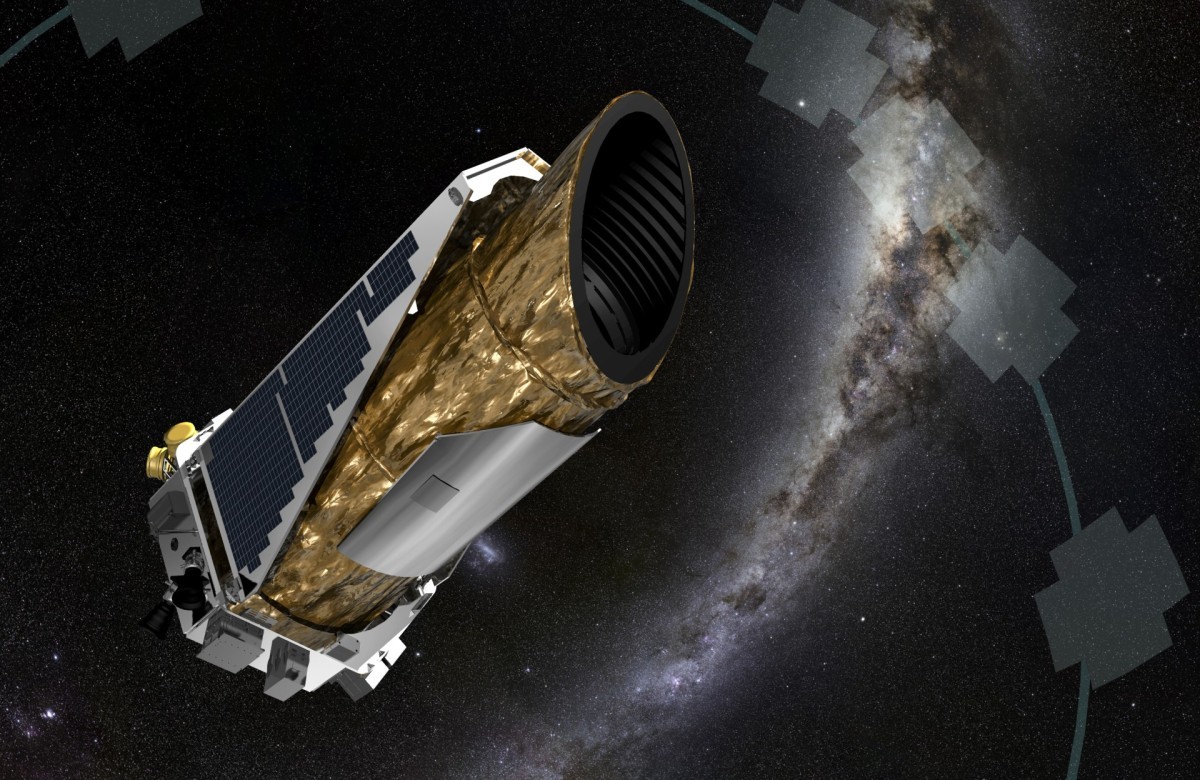The performance of the Kepler telescope is fully restored

On April 22, at 18:30 Moscow time, the functionality of the Kepler space telescope was fully restored and he returned to fulfilling the K2 mission - searching for exoplanets, NASA reported .
After establishing a connection with the telescope, engineers began rebooting systems in the evening of April 19th. First of all, it loaded the list of coordinates and scientific goals, confirmed the successful download, then restarted recording the log logs and counters, created a new sequence of commands, tested it and also loaded it into the machine.
Now the telescope is fully ready for scientific operations, and NASA announced the official launch of a new gravitational microlensing campaign as part of the K2 mission, it is called Campaign 9 or C9.
')
As shown in the illustration, Kepler detects the distortion of space-time during the passage of the planet in front of a star, noting the change in brightness of the star. The gravity of a massive body acts on the passing light, working as a kind of lens. Thus, a short-term increase in the brightness of a star indicates that a massive object, such as a planet, has just passed in front of it.

Now Kepler directed the lens of his camera towards the center of the Milky Way and began collecting data for the C9.

Kepler photosensitive CCD
A group of scientists on Earth is processing the data and looking for signs of gravitational microlensing. If they are located at the received coordinates, more powerful terrestrial telescopes will be targeted, such as 10-meter telescopes at the Keck Observatory on the peak of Mauna Kea in Hawaii.

Keck Observatory
The observation period of campaign 9 will end on July 1, 2016, when the center of the galaxy will disappear from Kepler. After this, campaign 10 starts with a new set of very interesting astronomical targets.
Last weekend, the engineers conducted several test communication sessions with Kepler. The last session is scheduled for Monday evening (from 6:45 pm to 12:45 am Moscow time, small antenna DSS-55). Real-time data transfer is displayed on the DSN Now website. Communication with a small antenna DSS-55 today has to confirm that the telescope again did not go into sleep / emergency mode. The large DSS-63, DSS-14 and DSS-43 antennas for high-speed communications were activated yesterday and transmitted telescope status data.
The causes of the April 8 anomaly are still being studied. Everything points to a transient event, which caused a lot of false warnings to overflow the system, after which Kepler went into sleep / emergency mode. Rebooting onboard computers and subsystems seems to have solved the problem. Now the telescope has returned to the collection of scientific data, but the investigation of the incident will continue.
Source: https://habr.com/ru/post/393279/
All Articles